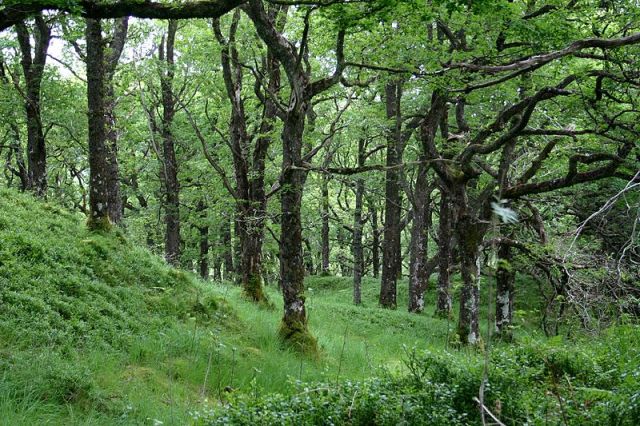Seminar of Department of Botany and Centre of Excellence EcolChange
This week we have not one, but two EcolChange seminars:
First, on Tuesday, 23. May 2017 at 15.15 in Tartu, Lai 40-218 (Vaga auditorium)
Andreas Prinzing will do a presentation “Do good neighbors compensate for bad climate?”
And Mathieu Santonja will talk about “Plant diversity mitigates the negative effects of climate change, via soil biota and litter decomposition”
Andreas Prinzing is Professor at the University of Rennes 1, France.
Do good neighbors compensate for bad climate?
Abstract:
Evolutionary proximate neighborhoods reduce vulnerability of seedlings to climatic stress and soil fungi mediate this effect
Climate is changing and is becoming warmer and drier in large part of Europe. As a result, tree species such as oaks (Quercus petraea) are at a risk of strong decline. The classic strategy of foresters is to introduce genotypes coming from warmer or drier provenances and likely being adapted to warm and dry climates. However, this strategy results in the loss of local genotypes and it does not account for non-climatic constraints, such as biotic interactions – the impact of tree neighbors or natural enemies. We focus here on oaks (Quercus petraea) and their most vulnerable stage, seedlings. We studied germination, survival, growth and budburst of seedlings within a natural mosaic of soil microclimates and manipulated the biotic neighborhood: the distance of seeds / seedlings to adult oaks, the species identity of these oaks, the evolutionary distance of the ambient canopy, the density of seeds / seedlings and the presence of pathogenic fungi. The results suggest that germination and first year growth show particularly strong relationships to neighborhood, environment and their interaction. Specifically, seedlings develop better in moist soils and under an evolutionarily proximate canopy and such a canopy in addition reduces the negative impact of dry soils. Overall, the impact of climate change on regeneration of this major forest tree-species might be mitigated by changing the evolutionary neighborhood in which the regeneration takes place.

Quercus petraea forest (pic from here)
Mathieu Santonja is Teaching and Research Assistant at the University of Rennes 1, France.
Plant diversity mitigates the negative effects of climate change, via soil biota and litter decomposition
Abstract:
We tested how plant community diversity and climate change (through decreased precipitation) impacts soil biota and litter decomposition in two Mediterranean ecosystems: a shrubland dominated by Quercus coccifera and a forest dominated by Quercus pubescens.
In the shrubland, multi-species litter showed higher microbial abundance, lower bacterial diversity and higher fungal diversity compared to single-species litter. C and N release increased with increasing litter species richness. Drier conditions increased microbial diversity, reduced net N release from litter and led to higher and more frequent synergistic effects on C release. The results suggests that shifts in plant community composition may have stronger impacts on litter decomposition and nutrient cycling than relatively subtle changes in precipitation.
In the forest, drier conditions affected decomposers negatively, directly by reducing fungal biomass and detritivorous mesofauna, and also indirectly by increasing the predation pressure on detritivorous mesofauna by predatory mesofauna. Increased drought strongly decreased decomposition but the presence of several plant species in the litter mitigated this effect. Hence, faster decomposition in diverse litter mixtures might compensate slower decomposition under drier condition in this ecosystem.

Bacterial stamp – 9th Microbiology Congress in Moscow in 1966 (pic from here)
And then, on Thursday, 25. May 2017 at 15.15 in Tartu, Lai 40-218 (Vaga auditorium
J. Peter W. Young will do a talk about “Do bacteria have species?”
J. Peter W. Young is professor emeritus at York University, UK. He is a guest of Doctoral School of Earth Sciences and Ecology and in addition to the seminar he will hold round-table discussion with PhD students and early career scientists: Thursday May 25th, 10.30 in Lai 40 coffee room
Abstract:
We classify all organisms into species, but bacteriologists have always done it a little differently. In the past two decades, we have acquired major new insights into bacterial genomes, diversity and evolution, and I believe it is time to rethink the species concept as applied to bacteria. On the one hand, bacteria have species equivalent to the species of sexual eukaryotes, defined by recombination and barriers to recombination. On the other hand, the dynamic nature of the bacterial accessory gene pool leads to high genetic and phenotypic diversity among members of the same species. We can define species in a consistent and stable way, but the species name will not tell us all we need to know about a bacterium. We also need a list of its most relevant accessory gene modules. This has important implications for current attempts to describe the diversity of bacterial communities, as well as for our understanding of pathogens and their evolution. I will illustrate these ideas with our own evidence from rhizobia, the symbiotic nitrogen-fixing bacteria.
Kumar N, Lad G, Giuntini E, Kaye ME, Udomwong P, Shamsani NJ, Young JPW, Bailly X (2015) Bacterial genospecies that are not ecologically coherent: population genomics of Rhizobium leguminosarum. Open Biology, 5: 140133. doi: 10.1098/rsob.140133
Remigi P, Zhu J, Young JPW, Masson-Boivin C (2016) Symbiosis within symbiosis: evolving nitrogen-fixing legume symbionts. Trends in Microbiology 24: 63-75 doi:10.1016/j.tim.2015.10.007

